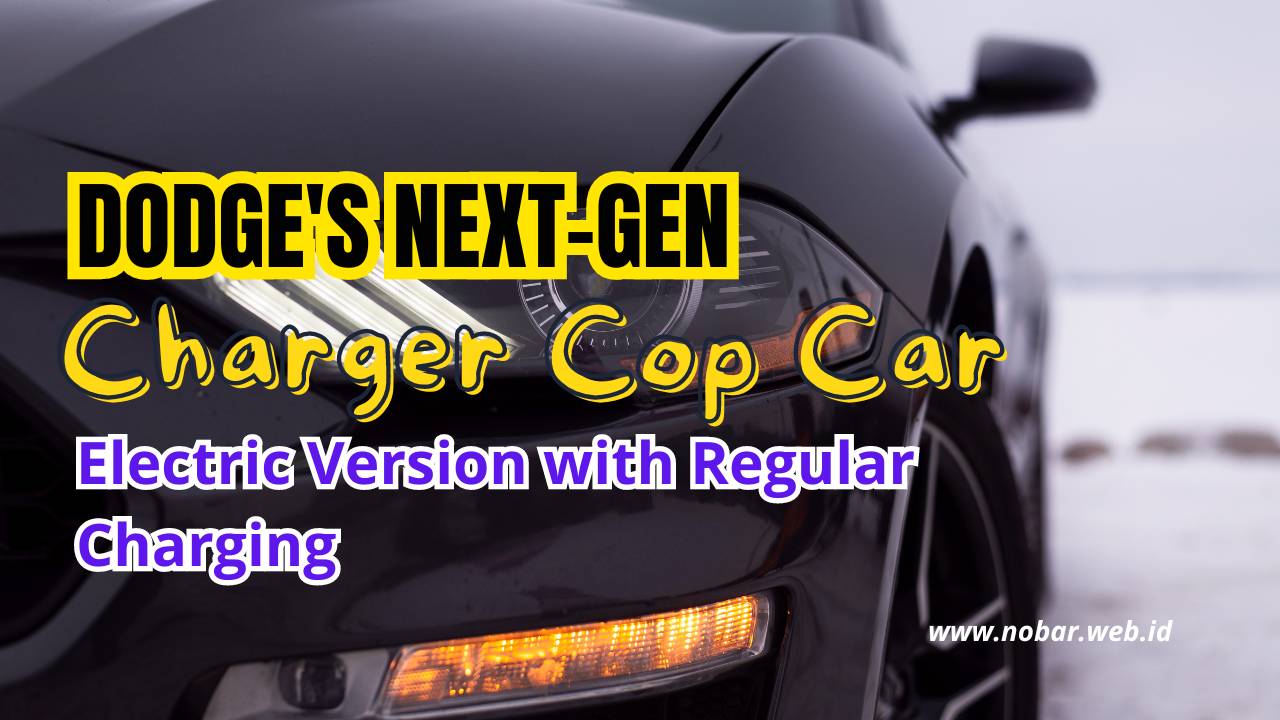In the ever-evolving world of law enforcement vehicles, Dodge is making waves with its latest concept: the next-generation Charger Daytona police car. As traditional models continue to serve, the idea of an electric police cruiser could signal a significant shift. Here’s a deep dive into what makes this concept intriguing and what it might mean for the future of police fleets.
The Evolution of the Dodge Charger in Law Enforcement
The Dodge Charger has long been a staple in police fleets across the United States. Known for its powerful performance and rugged reliability, it’s been the go-to vehicle for law enforcement agencies. Currently, Dodge Law, a division of Stellantis dedicated to providing fleet vehicles, offers several options, including the Durango AWD, the Jeep Wagoneer L, and various Ram trucks. Among these, the Durango stands out as the sole pursuit-rated model.
However, Dodge Law has recently teased a new concept that could change the landscape of police vehicles. Enter the Dodge Charger Daytona—a name that echoes with the promise of high performance and innovation. This concept vehicle is not just a nod to tradition but a glimpse into the future of police vehicles, particularly with its potential electric variant.
The Concept: Dodge Charger Daytona Police Car
At first glance, the Dodge Charger Daytona police car concept showcases a bold new direction. The prominent fratzog emblem on the front hints at a significant transformation: the possibility of an electric powertrain. This would mark a substantial shift from the traditional internal combustion engines that have powered police vehicles for decades.
While the concept is still in its early stages, it’s worth noting that Dodge is on the cusp of launching its new electric muscle sedan. The Charger Daytona could very well incorporate elements of this new electric technology, offering law enforcement a cutting-edge vehicle that combines high performance with eco-friendly benefits.
Electric Power: What Could it Mean for Police Vehicles?
If Dodge proceeds with an electric version of the Charger Daytona, it would be a game-changer for law enforcement fleets. Electric vehicles (EVs) are known for their quick acceleration and smooth operation—traits that could enhance the performance of police cruisers. The potential advantages of an electric Charger Daytona include:
- Instant Torque: Electric motors provide immediate torque, which could enhance the vehicle’s acceleration and response times.
- Quiet Operation: EVs operate more quietly than traditional engines, which could be advantageous in stealth operations.
- Reduced Emissions: A move towards electric vehicles aligns with growing environmental concerns and regulations aimed at reducing carbon footprints.
Practical Considerations for an Electric Police Cruiser
While the concept of an electric police car is exciting, several practical considerations need to be addressed:
- Range and Charging Infrastructure: One of the main challenges for EVs in law enforcement is range. Police vehicles often cover long distances and need to be ready for high-intensity operations. An electric Charger Daytona would require a battery capable of covering extensive distances on a single charge. Additionally, regular charging infrastructure would need to be established at police stations and other critical locations.
- Performance and Reliability: The Charger Daytona would need to undergo rigorous testing to ensure it meets the demands of police work. This includes high-speed pursuits, emergency response situations, and durability in various weather conditions. The performance of the electric powertrain, including acceleration and handling, would be closely scrutinized.
- Cost and Maintenance: While EVs can offer lower operating costs due to fewer moving parts and reduced fuel expenses, the initial purchase price and potential maintenance needs of an electric police vehicle will be a key consideration. Dodge would need to ensure that the overall cost of ownership aligns with the budgets of law enforcement agencies.
The Legacy and Appeal of Police Vehicles
There’s an undeniable allure to police vehicles, particularly those with high-performance specifications. The Fox-body Mustang SSP and the Chevrolet Caprice PPV are prime examples of police cars that have gained a cult following. These vehicles have become symbols of power and prestige, often sought after by enthusiasts and collectors.
The Dodge Charger Daytona could follow in these footsteps, appealing to both law enforcement agencies and muscle car aficionados. Its sleek design, combined with the innovation of an electric powertrain, could create a new icon in the realm of police vehicles. The Charger Daytona might not only serve as a functional police car but also as a statement of progress and modernity.
The Future of Dodge Law Vehicles
Dodge Law has consistently provided vehicles that meet the rigorous demands of law enforcement. The introduction of the Charger Daytona concept, particularly with the potential for an electric version, reflects a commitment to innovation and adaptation. As the automotive industry continues to embrace electric technology, law enforcement agencies may find themselves equipped with vehicles that are both powerful and sustainable.
While the Charger Daytona is still a concept, it represents a significant step forward in the evolution of police vehicles. Whether or not it becomes a reality, the concept demonstrates Dodge’s vision for the future and its willingness to push boundaries.
Dodge’s concept for a next-generation Charger Daytona police car, potentially featuring an electric powertrain, is an exciting development in the world of law enforcement vehicles. As the automotive industry shifts towards electric technology, the possibility of an electric police cruiser opens up new opportunities for performance, efficiency, and sustainability.
While details are still scarce, the concept serves as a glimpse into what could be a transformative addition to police fleets. As we await further developments, the Dodge Charger Daytona stands as a testament to innovation and the ongoing evolution of law enforcement vehicles.



